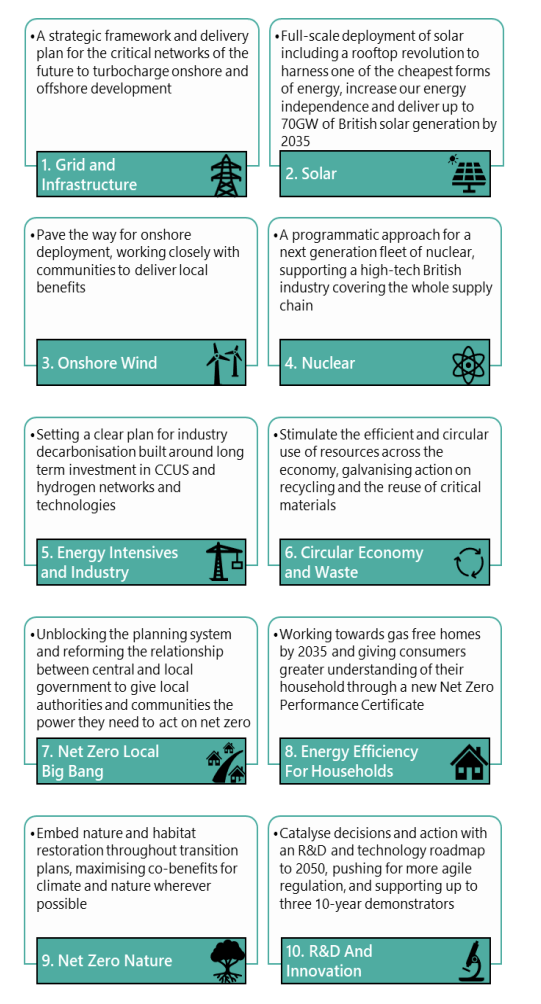“Day after day, day after day,
We stuck, nor breath nor motion;
As idle as a painted ship
Upon a painted ocean.”
(from The Rime of the Ancient Mariner, by Samuel Taylor Coleridge, 1834)
But that’s all I’m going to say about MIPIM. This post is just a toe dip into (1) flood risk and (2) water scarcity.
Water Water Everywhere
Government policy on planning and flood risk is set out in paragraphs 165 to 175 of the current December 2023 version of the NPPF, supplemented by Government’s Planning Practice Guidance on flood risk and coastal change. The Environment Agency is the Government’s statutory planning consultee on flood risk issues.
The proper interpretation of the Government’s policy on flood risk, and in particular on the risk-based sequential approach to locating development which is at the heart of it, was considered in two recent cases. In relation to each of them I am simply going to point to the relevant Town Library summary (to subscribe for free to our weekly case law and other summaries click here ).
R (Substation Action Save East Suffolk Limited) v Secretary of State for Energy Security and Net Zero (Court of Appeal, 17 January 2024)
My colleague Jack Curnow summarised this case here. This was a legal challenge to two development consent orders for the construction of the East Anglia ONE North and East Anglia TWO Offshore Wind Farms together with associated onshore and offshore development. The environmental statement for the project dealt with flooding from surface water stated that the onshore substations and National Grid Infrastructure were located in areas primarily at low risk of surface water flooding, with some permanent infrastructure (parts of access roads) likely to cross areas at both high risk and medium risk of surface water flooding, with appropriate mitigation measures within the design to address any remaining surface water flood risk concerns. The court held that the sequential approach does not apply to the risk of flooding from surface water, as opposed to the risk of fluvial flooding. Whilst the risk of flooding from surface water is to be taken into account when deciding whether to grant development consent, that is a matter of planning judgment for the decision maker.
Mead Realisations Limited v Secretary of State (Holgate J, 12 February 2024)
My colleague Chatura Saravanan summarised this case here. This case dealt with two challenges to inspectors’ decision letters:
a) a decision to dismiss the appeal by Mead Realisations Limited against the refusal by North Somerset Council for a residential development of up to 75 dwellings; and
b) a decision to dismiss the appeal by Redrow Homes Limited against the refusal by Hertsmere Borough Council for a residential development of up to 310 units and other facilities.
The claims were heard together as they raised the common central issue of what is the correct interpretation and application of the flood risk sequential test. Specifically, Mead and Redrow argued that the Inspectors misinterpreted paragraph 162 (now 168) of the NPPF in identifying what might be “reasonably available” sites under the sequential approach, in that they applied the guidance in paragraph 028 of the PPG, which conflicted with paragraph 162 of the NPPF. This raised the question of whether the PPG did indeed conflict with the NPPF and, if so, whether the NPPF should supersede the PPG.
Holgate J held that there was no rule that the PPG could not be inconsistent with the NPPF:
“As a matter of policy, PPG is intended to support the NPPF. Ordinarily, therefore, it is to be expected that the interpretation and application of PPG will be compatible with the NPPF. However, I see no legal justification for the suggestion that the Secretary of State cannot adopt PPG which amends, or is inconsistent with, the NPPF”.
However he held that in any event there was no conflict in any event:
“The PPG performs the legitimate role of elucidating the open-textured policy in the NPPF. The PPG describes “reasonably available sites” as sites “in a suitable location for the type of development with a reasonable prospect that the site is available to be developed at the point in time envisaged for the development.” The PPG provides for issues as to suitability of location, development type, and temporal availability to be assessed by the decision-maker as a matter of judgment in accordance with the principles set out above. In this context, the PPG correctly states that “lower-risk sites” do not need to be owned by the applicant to be considered “reasonably available.” That is consistent with the need for flexibility on all sides.”
For a number of more detailed arguments raised by the claimants (and all rejected), it’s worth reading the case itself or Chatura’s summary.
Nor Any Drop To Drink
Water scarcity is becoming one of those worrying “neutrality” issues which can cut across the more familiar uncertainties of the planning system – see the ongoing issues in Sussex referred to in my 9 October 2021 blog post Development Embargos: Nitrate, Phosphate & Now Water .
Another area where water scarcity concerns have been raised is of course Cambridge (where Samuel Taylor Coleridge was an undergraduate at Jesus College between 1791 and 1794 – these blog posts aren’t just thrown together). The Secretary of State’s 24 July 2023 long-term plan for housing committed to “transformational change” in Cambridge:
“Proposals will see Cambridge supercharged as Europe’s science capital, addressing constraints that have left the city with some of the most expensive property markets outside London, and companies fighting over extremely limited lab space and commercial property with prices that rival London, Paris and Amsterdam.
These ambitious plans to support Cambridge include a vision for a new quarter of well-designed, sustainable and beautiful neighbourhoods for people to live in, work and study. A quarter with space for cutting-edge laboratories, commercial developments fully adapted to climate change and that is green, with life science facilities encircled by country parkland and woodland accessible to all who live in Cambridge.
Any development of this scale will have substantial infrastructure requirements. The government will deliver as much of the infrastructure and affordable housing as possible using land value capture – with the local area benefiting from the significant increase in land values that can occur when agricultural land is permitted for residential and commercial development. Land values will reflect the substantial contributions required to unlock the development (see annex).
A Cambridge Delivery Group, chaired by Peter Freeman and backed by £5 million, will be established to begin driving forward this project. The Group will work to turn this vision into a reality, taking a lead on identifying the housing, infrastructure, services and green space required. It will also consider options for an appropriate delivery mechanism that will be needed to lead the long-term work on planning, land acquisition and engagement with developers, starting in this Parliament but running through the next few years as development takes shape.”
The Delivery Group was to “take forward immediate action to address barriers such as water scarcity across the city, including:
- Convening a Water Scarcity Working Group with the Environment Agency, Ofwat, central and local government and innovators across industries to identify and accelerate plans to address water constraints. The Group will include all relevant partners to understand what it would take to accelerate building the proposed new Fens Reservoir and enabling Cambridge to reach its economic potential.
- Supporting the council in efforts to make sure new developments proposed as part of the local plan can be as sustainable as possible, including whether new houses in planned developments such as Waterbeach and Hartree can be made more water efficient. To support this, the government is announcing today a £3 million funding pot to help support measures to improve the water efficiency of existing homes and commercial property across Cambridge, to help offset demands created by new developments in the local plan.
- The government will also take definitive action to unblock development where it has stalled, providing £500,000 of funding to assist with planning capacity. Cambridge City Council, Anglian Water, Land Securities PLC and Homes England will work together to accelerate the relocation of water treatment works in Northeast Cambridge (subject to planning permission), unlocking an entire new City quarter – delivering approaching 6,000 sustainable well-designed homes in thriving neighbourhoods – as well as schools, parks and over 1 million square feet of much needed commercial life science research space.”
On 6 March 2024 DLUHC published The case for Cambridge :
“Our first priority is water scarcity, which is holding back development and risks causing environmental harm. It is vital that the city has the water supply it needs to support long-term growth, including a new reservoir in the Fens and a new pipeline to transfer water from nearby Grafham Water. We are also making a one-off intervention to support growth in the shorter-term by delivering water savings through improved water efficiency of appliances in existing buildings that can offset new homes and commercial space.
The government will:
- Deliver a unique offsetting intervention to save water now through improving efficiency and support sustainable growth – set out in detail in a paper published alongside this document.
- Issue a joint statement from the Environment Agency, Greater Cambridge Shared Planning, DLUHC and Defra, outlining our commitment to sustainable growth and development on the basis of our water credits scheme.
- Appoint Dr Paul Leinster to chair the Water Scarcity Group to advise the government on future water resource options, including the reservoir in the Fens and the Grafham Water pipeline.”
Alongside the case for Cambridge document, a joint statement between DLUHC, Defra, the Environment Agency and Greater Cambridge councils (Cambridge City and South Cambridgeshire districts) on measures to address water scarcity issues in the area was published on the same day, setting out its proposed scheme to develop, and help to fund, a water credits market “intended to provide greater certainty through:
a. The delivery of water savings measures in the Cambridge Water operating area, supported by the government’s spending.
b. A robust water credit system being in place to assure those water savings and issue credit certificates to developers and housebuilders.
c. Application of enforceable planning mechanisms so that planning permissions are linked to water savings measures in a robust way.”
The focus is of course welcome but water scarcity is increasingly going to be a challenge facing us in many parts of the country– see for instance this 4 September 2023 FT article The UK is at risk of running low on water. Why? (although the answer to the question in the heading to the article may lie in its sub-heading: “A country famous for its rainy climate faces grave supply issues, after years of poorly managed systems”…)
NB Did you know that 15 out of the 22 albatross species remain threatened with extinction? How stupid are we as a species – and how ignorant of the message of that poem?
Simon Ricketts, 16 March 2024
Personal views, et cetera





















